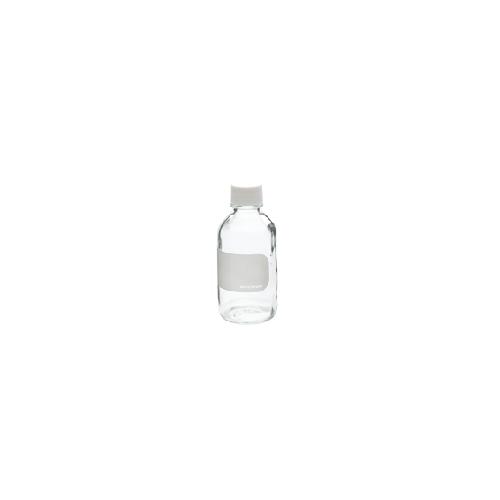GC-MS Test for Siloxane D4 (Cyclotetrasiloxane, octamethyl-) in Industrial Effluents

D4, also known as cyclotetrasiloxane and Octamethylcyclotetrasiloxane. D4 is an industrial product used in many applications, primarly in cosmetic products and polymers, in its pure form and in mixtures with other siloxanes. All silicone polymers have residual of D4, because it is a byproduct of polymerisation.
D4 was identified as a harmfull compound to the environment, and it may accumulate in living organisms and cause complications.
Government of Canada issued a notice to prevent or limit D4 releases to the environment from industrial effluents. More information is here.
PO-Laboratories developed sensitive and reliable method of analysis of D4 siloxane in industrial effluents. Environment Canada has audited PO-Laboratories, examined the D4 method and run interlaboratory comparison study. As a result, PO-Laboratories has been certified and accredited by Environment Canada as an independent laboratory to perform D4 testing in industrial and environmental samples.


Collection of Wastewater Samples for Polysiloxane GC-MS Headspace Analysis
Polysiloxanes are highly volatile and hydrophobic compounds that could easily escape water-based sample. The accurate analysis of polysiloxanes in water requires proper sample collection, package and storage techniques.
Most of siloxanes are very volatile and hydrophobic compounds. The tests show that samples with
trace siloxane require special technique and precautions for sample handling, packing and analysis.
Below are few recommendations for proper sample handling:
- No plastic material should come into contact with samples. Siloxanes will be completely extracted from a sample by any plastic (except Teflon) in minutes. Avoid contact of samples with any plastic surfaces as plastic pipettes, bottles, and tips.
- Paper cups may not be used because they have wax or plastic on the internal surface.
- Use only glass pipettes, glass or metal containers to collect, measure and store samples.
- All caps and lids must be foil-lined, so the sample could not contact any plastic except Teflon or rubber surface.
- No deactivated glass should be used (Some glassware and vials are deactivated with silanes to remove functional OH-groups from the glass surface).
- Silicone rubber is a popular material for closure septa; however, it heavily contaminates sample with all D and L polysiloxanes. Accordingly, silicone rubber must be avoided in any combinations as silicone-foil lined septa or silicone – Teflon (PTFE) septa closure;
- Acceptable septa for caps and closures are aluminum foil lined butyl rubber septa, Teflon lined butyl septa, Teflon lined PE foam septa or Teflon only septa.
- If foil-butyl rubber septa are not available standard butyl rubber septa could be used with aluminum foil discs.
- Important to know, that most of hand and face cosmetic creams contain a lot of D4 – D5 siloxanes and it is easy to contaminate the sample if a person who recently used such a cream will collect or handle the samples. During our projects with siloxanes we not allow chemists to use any cosmetic crams at least one week in advance.
- Siloxanes are volatile, and because of that sample must be collected in a sample bottle and immediately closed with an appropriate cap. Siloxanes may penetrate most cap materials and escape from sample, and so prolonged storage of samples is not possible.
- Siloxanes are hydrophobic, this means that they can form a thin film on a still water surface.
- Sample collected from such a surface could contain excess of siloxanes. Intensive mixing, agitation or presence of any (silicone-free) surfactant can help to distribute siloxanes more uniformly in the volume of water to be sampled and as a result collected sample from such a water will be more representative.
Recommended containers and closuresRecommended container size: 125 – 250 mL (4 – 8 oz), glass, PP cap with Teflon or foil liner.Tested and approved for siloxane sampling are the next containers:




Sample collection:
- Choose a place where representative sample could be collected.
- If possible collect sample into the sample bottle directly and immediately close it. If not, use appropriate metal or glass container to get water to be sampled and then fill from it the sample bottle, then close it.
- Close the bottle with the cap tight enough so it won’t leak but not too tight otherwise you could damage the foil layer on the cap septa.
- Label the bottle; use laser-printed sticker or water-proof ink pen, such as permanent marker.
- Collect 3 samples in separate bottles from the same sampling point and same time to allow replicate analysis.
- Ship the samples to PO-Labs with overnight delivery on the same day when samples are collected. Storage of samples for several days is not allowed.
- Sample volume depends on weather conditions: if a freezing temperature expected during sample shipment, freezing of water in the samples could break glass bottles and so samples will be lost. To avoid this, fill the sample bottle to approximately 1/3 of its volume, close the bottle and freeze the sample in it while keeping the bottle on a side. Make sure the bottle not get cracked when sample is completely frozen inside. Then pack bottles with frozen samples in a plastic bag, attach it to the bottom of a Styrofoam box with duct or scotch tape, fill the box with dry ice and ship it to PO-Labs.
- During warm seasons, when samples may not freeze during the shipment, fill sample bottles almost to the top, cap, pack them with soft materials and ship to PO-Labs.
- In every box with samples shipped to PO-Labs must be included a form with detailed sample description, such as “Sample chain-of-custody” form.
- At the time of sample shipment an email with shipment tracking number must be sent to info@po-labs.com.

